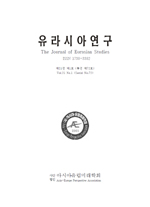- 영문명
- Determinants of Export Competitiveness of the Manufacturing Industry
- 발행기관
- 아시아.유럽미래학회
- 저자명
- 권선희(Sunhee Kwon)
- 간행물 정보
- 『유라시아연구』제21권 제2호, 1~24쪽, 전체 24쪽
- 주제분류
- 사회과학 > 사회과학일반
- 파일형태
- 발행일자
- 2024.06.30

국문 초록
글로벌 교역환경이 빠르게 변화하면서 우리나라의 수출이 둔화되고 있는 시점에서 제조업의 산업별 수출경쟁력의 결정요인을 분석하여 시사점을 제시하고자 하였다. 본 연구에서는 40대 제조업을 대상으로기술수준에 따라 산업을 구분한 뒤 산업별 특성에 따른 수출경쟁력에 영향을 미친 요인을 찾기 위해 현시비교우위지수를 대리변수로 활용하였다. 분석결과 수출경쟁력에 영향을 미치는 요인은 산업별로 다르게 나타나고 있으며 글로벌금융위기 전후로도 차이를 보이는 것으로 나타났다. 먼저, 연구개발투자는수출경쟁력에 긍정적인 영향을 미치는 것으로 나타났으며 산업의 차이는 없었다. 하지만 두 변수간의비선형 관계에서는 산업별 차이를 보이는 것으로 나타났는데, 기술력이 낮은 산업에서는 비선형관계가존재하지만 기술력이 높은 산업에서는 비선형관계가 존재하지 않는 것으로 나타났다. 이는 고기술산업에서의 지속적인 연구개발투자가 수출경쟁력으로 이어질 수 있다는 것을 의미한다. 둘째, 노동생산성과자본생산성은 수출경쟁력에 긍정적인 영향을 미치는 것으로 확인되었지만 통계적인 유의성은 산업의기술 수준에 따라 다르게 나타나고 있어 기술 수준별로 생산성의 영향이 차이를 보이는 것으로 나타났다. 셋째, 부채비율의 증가는 기술 수준이 높은 산업의 경우에는 수출경쟁력에 긍정적인 영향을 미치는것으로 나타났지만 기술 수준이 낮은 산업의 경우에는 부채비율이 제약요인으로 작용하여 수출경쟁력에 부정적인 영향을 미치는 것으로 나타났다. 마지막으로 글로벌 금융위기 전후의 계수값 차이를 살펴보면, 연구개발투자의 경우 금융위기 이전의 값보다 이후의 계수값이 크게 나타나고 있어 금융위기 이후 연구개발투자의 영향이 커졌다고 볼 수 있다. 하지만 부채비율과 임금의 경우에는 반대로 금융위기이후의 계수값이 작게 나타나고 있는 것으로 분석되었다. 이러한 분석결과는 수출경쟁력을 강화하기위한 정책은 산업의 기술수준을 고려하여야 함을 의미한다.
영문 초록
At a time when Korea's exports are slowing down due to rapid changes in the global trade, this study analyzes the determinants of export competitiveness by industry in the manufacturing sector and suggests implications. In this study, the 40 largest manufacturing industries were categorized according to their technology level, and the current comparative advantage index was utilized as a proxy variable to find factors that influenced export competitiveness according to industry characteristics. The results show that the factors affecting export competitiveness vary by industry and differ before and after the global financial crisis. First, R&D investment was found to have a positive effect on export competitiveness, with no differences across industries. However, the nonlinear relationship between the two variables shows differences by industry, with a nonlinear relationship in low-tech industries but no relationship in high-tech industries. This suggests that continuous R&D investment in high-tech industries can lead to export competitiveness. Second, labor productivity and capital productivity are found to have a positive impact on export competitiveness, but the statistical significance varies by industry technology level, suggesting that the impact of productivity varies by technology level. Third, an increase in the debt ratio is found to have a positive effect on export competitiveness for high-tech industries, but for low-tech industries, the debt ratio acts as a constraint and has a negative effect on export competitiveness. Finally, looking at the difference in coefficient values before and after the global financial crisis, the coefficient value of R&D investment is larger after the crisis than before the crisis, suggesting that the impact of R&D investment increased after the crisis. However, in the case of debt ratio and wages, the coefficient values are smaller after the crisis. These results suggest that policies to strengthen export competitiveness should take into account the technological level of the industry.
목차
Ⅰ. Introduction
Ⅱ. Literature Review
Ⅲ. Methodology
Ⅳ. Results and Discussion
Ⅴ. Conclusion
References
키워드
해당간행물 수록 논문
참고문헌
최근 이용한 논문
교보eBook 첫 방문을 환영 합니다!

신규가입 혜택 지급이 완료 되었습니다.
바로 사용 가능한 교보e캐시 1,000원 (유효기간 7일)
지금 바로 교보eBook의 다양한 콘텐츠를 이용해 보세요!



